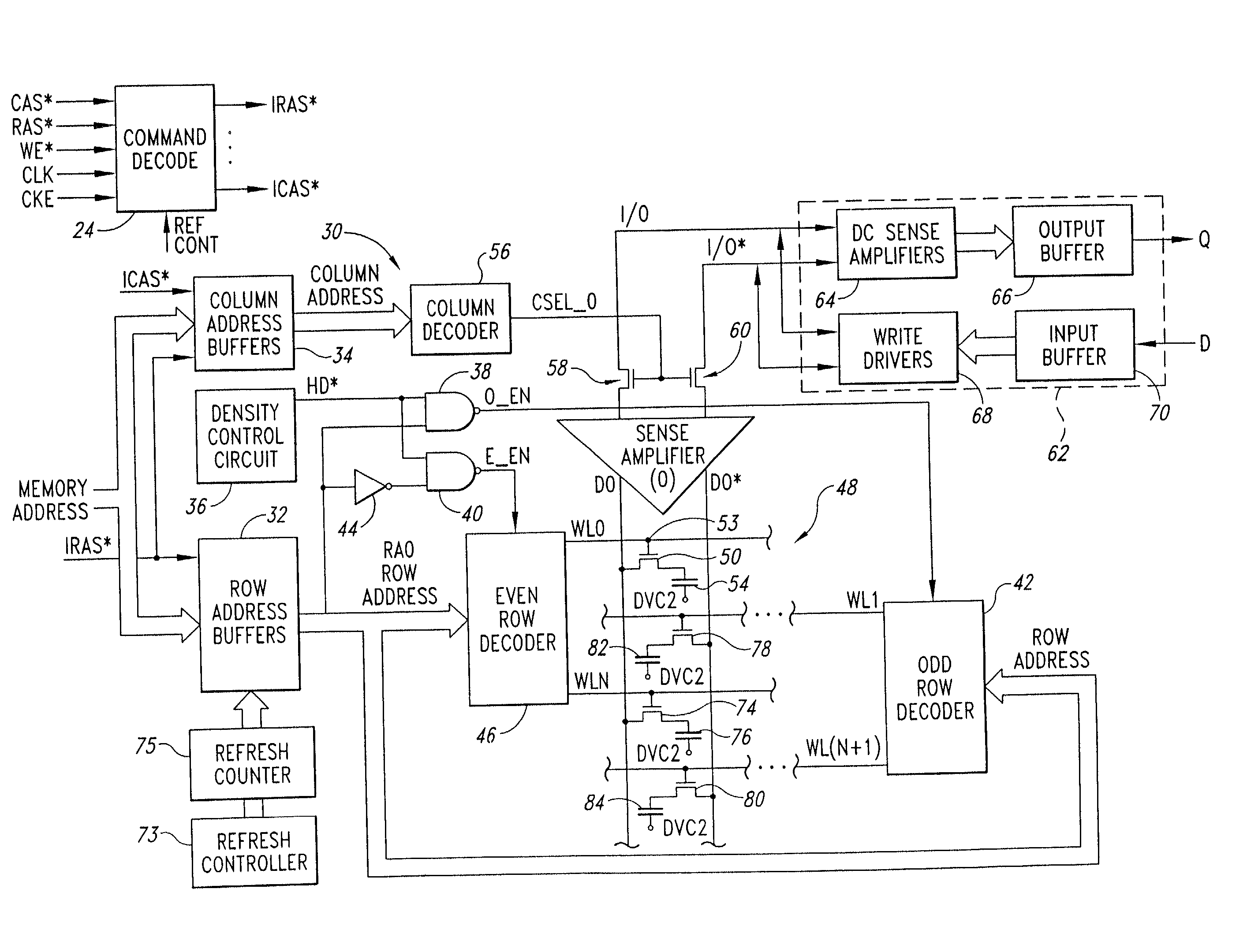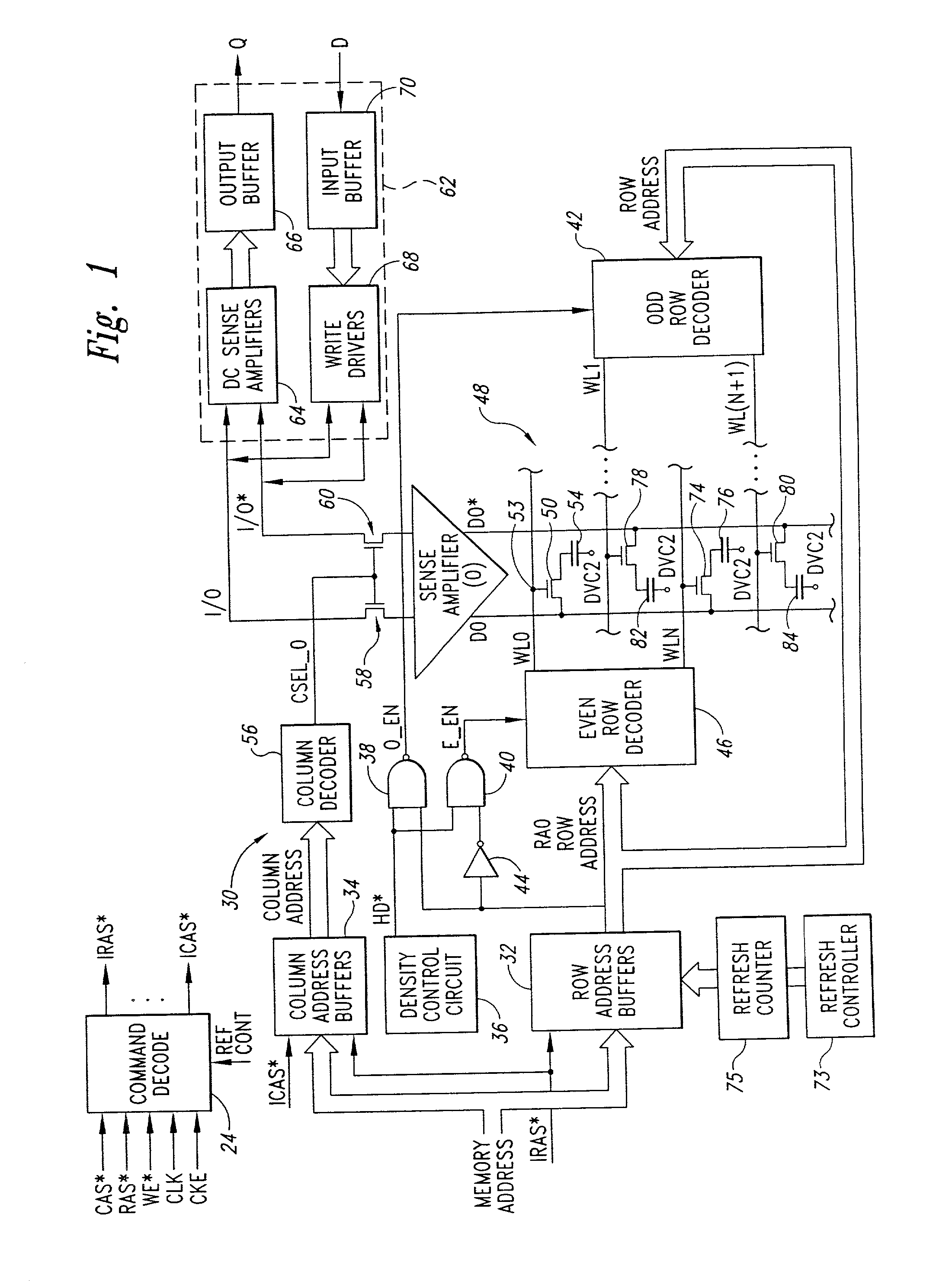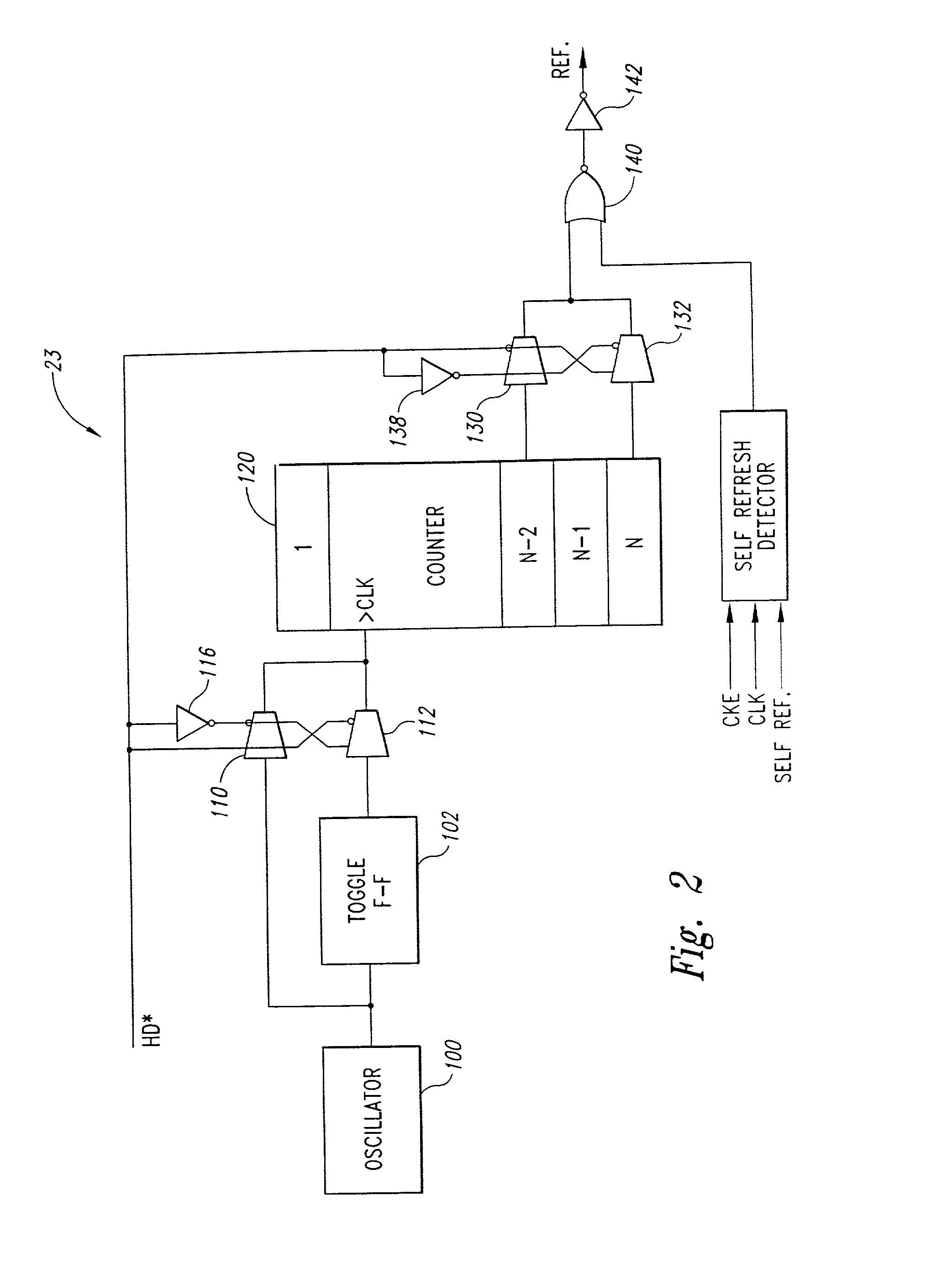Refresh controller and address remapping circuit and method for dual mode full/reduced density DRAMs
a controller and address remapping technology, applied in the field of dynamic random access memories, can solve the problems of excessive power consumption, and achieve the effect of reducing density mode and excessive power consumption
- Summary
- Abstract
- Description
- Claims
- Application Information
AI Technical Summary
Benefits of technology
Problems solved by technology
Method used
Image
Examples
Embodiment Construction
[0016] FIG. 1 is a block diagram of a synchronous dynamic random access memory ("SDRAM") 20 according to one embodiment of the invention. The SDRAM 20 includes row and column address buffers 32 and 34 receiving a time-multiplexed row and column addresses, respectively. The SDRAM 20 also includes a command decoder 24 receiving several command signals, including a row address strobe signal RAS*, a column address strobe signal CAS*, a write enable signal WE*, a clock signal CLK, and a clock enable signal CKE. As is well known in the art, various combinations of these command signals correspond to respective memory commands, such as activate, read, write, precharge, etc. The command decoder 24 then generates control signals corresponding to the memory commands, including a read command and a write command. Two of the control signals generated by the command decoder 24 are an internal row address strobe signal IRAS and an internal column address strobe signal ICAS*. It will be understood...
PUM
 Login to View More
Login to View More Abstract
Description
Claims
Application Information
 Login to View More
Login to View More - R&D
- Intellectual Property
- Life Sciences
- Materials
- Tech Scout
- Unparalleled Data Quality
- Higher Quality Content
- 60% Fewer Hallucinations
Browse by: Latest US Patents, China's latest patents, Technical Efficacy Thesaurus, Application Domain, Technology Topic, Popular Technical Reports.
© 2025 PatSnap. All rights reserved.Legal|Privacy policy|Modern Slavery Act Transparency Statement|Sitemap|About US| Contact US: help@patsnap.com



